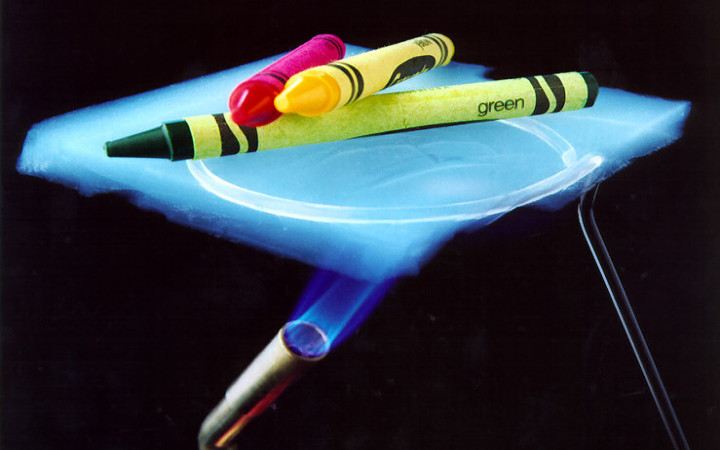Today’s Wonder of the Day was inspired by Sidney. Sidney Wonders, “What is aerogel?” Thanks for WONDERing with us, Sidney!
If someone asked you to guess what aerogel is, what would you say? Is it a new kind of hair gel that's good for the environment? Could it be a new type of gelatinous airplane fuel?
While new hair gels and airplane fuels would both be good things, aerogel is neither of those things. In fact, it's much, much more.
Aerogel is the lightest solid substance ever made by man. Imagine a bowl of gelatin that has had all the liquid removed and replaced by air. Rather than collapsing, however, it retains its structure and feels like Styrofoam. That's what aerogel is like. Its translucent appearance has earned it the nickname "frozen smoke."
Aerogel was the result of a bet between two American scientists in the late 1920s. Samuel Kistler and Charles Learned raced to be the first successfully to replace the liquid in a gel with gas while keeping the gel's structure intact. Kistler eventually won when he produced the first aerogel.
Depending upon the substances used to make them, aerogels can exhibit amazing properties. They're fireproof and can absorb both water and oil. They're incredibly strong, given their light weight. They can also be both great electrical conductors and some of the best insulators in the world.
If you're WONDERing why you haven't heard more about aerogels, it's because they tend to be used only in limited applications because they're incredibly expensive to produce. Some aerogels cost as much as $23,000 per pound, rivaling the cost of gold.
Aerogel starts out as alcogel, which is a silica gel composed of alcohol. The alcogel must undergo a scientific process known as supercritical drying to produce aerogel. Using pressure and heat, the alcogel is transformed into a lightweight solid made out of silica with air where liquid once was.
There are three main types of aerogels: silica, carbon, and metal oxide. Silica aerogels are the most common. Carbon aerogels can conduct electricity and are used in supercapacitors and fuel cells. Metal oxide aerogels can be magnetic and are used as catalysts for chemical transformations, as well as in making explosives and carbon nanotubes.
Aerogels have found interesting uses on Earth and in space. NASA has used aerogels to insulate electrical equipment on spacecraft and to collect space dust from comets. Back on Earth, you can find aerogels in a wide variety of products, including wetsuits, firefighting suits, cosmetics, paints, windows, and skylights.
Future uses of aerogels are only limited by the expense of producing them. Their unique structure makes them some of the best insulators ever made, because their many air pockets almost completely prevent heat loss from convection, conduction, and radiation.
Will you be the scientist who develops a new cost-effective method of manufacturing aerogels? If so, what applications will aerogels be used for in the future?




